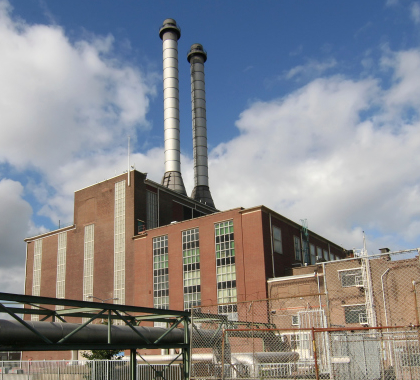The Northern Indiana Public Service Company (NIPSCO) has proposed shutting down two large coal power plants it operates and replacing them with renewable energy sources.
NIPSCO provides electric power to approximately 460,000 customers and natural gas to about 820,000 customers across Indiana. In the Integrated Resource Plan NIPSCO filed with the Indiana Utility Regulatory Commission (IURC), the company proposes closing four coal-powered generators at its Wheatfield plant by 2023 and one coal-powered unit in Michigan City by 2028.
Low-Cost Coal Power
Data from the Energy Information Administration and various other studies show natural gas and coal power provide the lowest-cost electric power across the nation. Currently, Indiana’s electricity prices are 10 percent below the national average. The state’s low electric power rates reflect the fact 68 percent of the electricity generated in Indiana comes from coal power plants, with natural gas providing approximately 27 percent of the remaining electric power.
Under NIPSCO’s proposal, the percentage of electric power generated by coal would decrease from 65 percent today to 15 percent in 2023 and zero by 2028.
NIPSCO proposes replacing its Wheatfield and Michigan City coal power plants producing a combined 1,800 Megawatts (MW) of electric power with a mixture of 1,500 MW of solar with battery backup, 150 MW of wind, 125 MW of reduced demand through efficiency and demand-side management programs, and 50 MW of electricity purchased from other utilities, all by 2028.
Although NIPSCO says its electric power shift will save ratepayers more than $4 billion in the long run, it has asked IURC to approve a 12 percent rate hike to pay for decommissioning its existing power plants and building the renewable capacity to replace it.
As a regulated monopoly, NIPSCO’s decommissioning plan and associated rate hike are subject to approval by the IURC.
‘Unfounded’ Claims of Savings
There is absolutely no evidence to support NIPSCO’s claims its renewable power rate hike will save consumers money over the long term, says James Taylor, a senior fellow with The Heartland Institute, which publishes Environment & Climate News.
“NIPSCO’s claims that transitioning from affordable coal power to wind and solar will save consumers money are unfounded,” said Taylor. “NIPSCO itself estimates, if approved, switching from reliable coal power to renewable will cost the average household more than $100 per year in additional electricity costs, with any savings coming decades in the future. That means a healthy portion of Indianans who must immediately pay the higher rates will die before any asserted cost savings kick in.
“As a government-protected monopoly utility, Indiana guarantees NIPSCO a profit of approximately 10 percent for every dollar it spends,” Taylor said. “As a result, NIPSCO has a financial self-interest in building expensive new power facilities, even when existing facilities, facilities that have already been paid off, are working perfectly well.”
NIPSCO’s plan will cost shareholders and customers alike, says Fred Palmer, managing director of Burnmorecoal.com and a Heartland Institute senior fellow.
“NIPSCO’s proposal to replace all coal-fired generation within 10 years with higher-cost renewables comes without a legitimate business or environmental reason to take this action,” said Palmer. “Customers will be punished, and shareholder wealth will be squandered as NIPSCO’s plan, with its new high-price rate structure, drives manufacturing overseas to China-led Asia, where new coal plants are being built and existing low-cost coal generation is booming.”
Problematic Resource Plan
NIPSCO’s integrated resource plan is defective and will be costly for ratepayers, says Bruce Stevens, president of the Indiana Coal Council.
“Eighteen hundred megawatts of reliable coal generation is a huge amount of power to replace with renewables, and particularly in this part of the country,” said Stevens. “Retiring functioning coal plants such as those NIPSCO operates prior to the end of their useful life is problematic for ratepayers, as consumers will have to provide recovery for those assets still on the books plus pay for any replacement generation.
“That is problematic for not only residents but also for the large manufacturing sector located in NIPSCO’s service territory,” Stevens said. “The Indiana Coal Council, which was an active participant during the stakeholder meetings held as NIPSCO developed its integrated resource plan, believes this plan is flawed, a point we will be raising in our comments concerning the plan to the Indiana Utility Regulatory Commission.”
Dubious About Projections
Taylor says IURC shouldn’t be fooled by NIPSCO’s unrealistic projections of cost savings.
“IURC should closely scrutinize NIPSCO’s cost projections, because utilities seeking to build out new wind, solar, and battery-storage facilities to replace existing coal facilities have a history of overestimating the costs of future coal power and underestimating the costs of building renewable power equipment,” Taylor said. “Why does NIPSCO require a steep, immediate rate hike if its proposal will save Indianans money?
“NIPSCO does not provide any enforceable guarantee its plan will end up saving consumers money in the future, nor does the company guarantee to lower its rates by more than 12 percent a few decades from now to compensate for the higher rates it seeks to impose today,” said Taylor. “NIPSCO’s proposal guarantees itself large, immediate profits while guaranteeing consumers nothing—other than massive rate hikes in the near term.”
H. Sterling Burnett, Ph.D. ([email protected]) is a senior fellow at The Heartland Institute.





